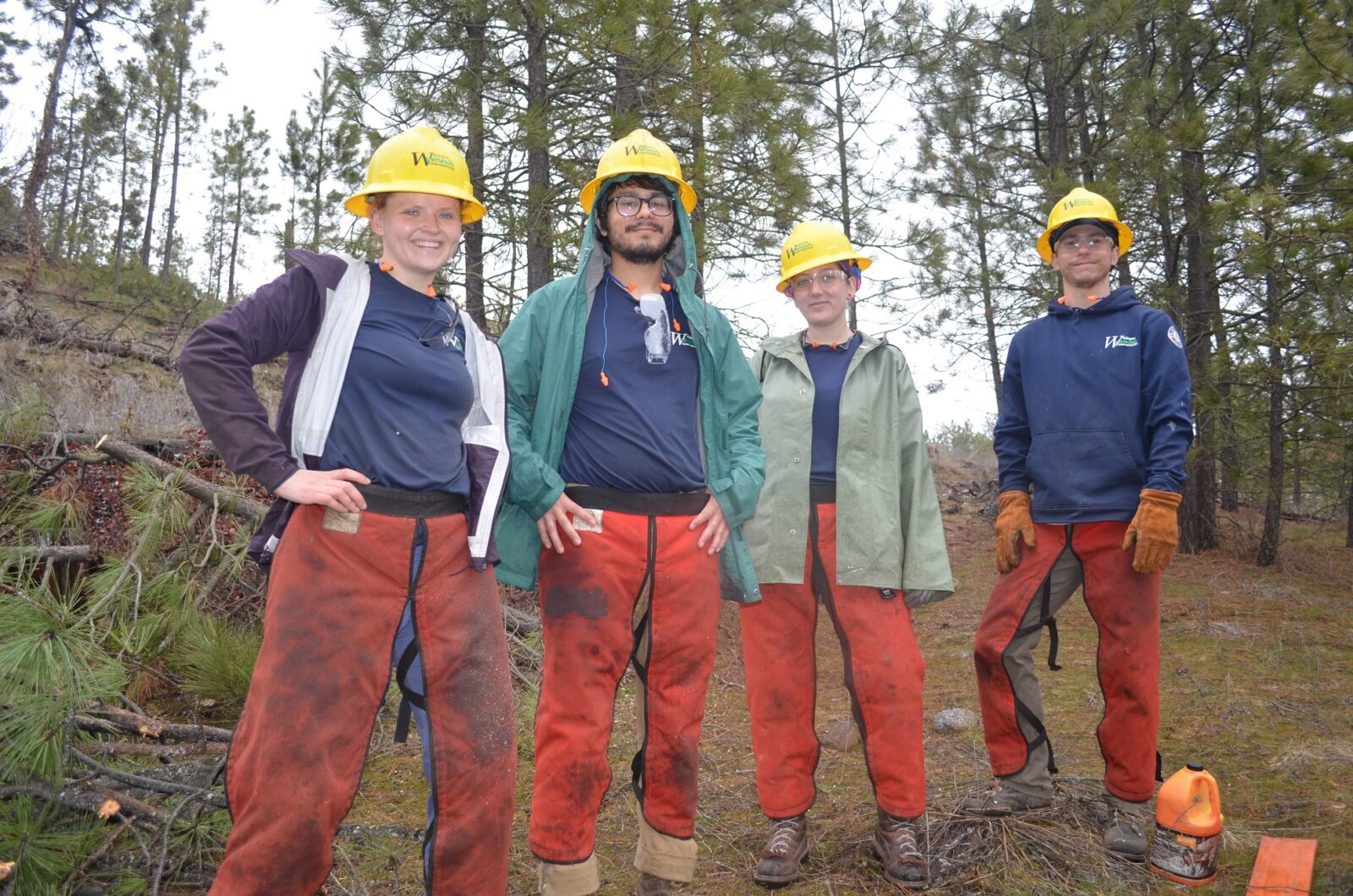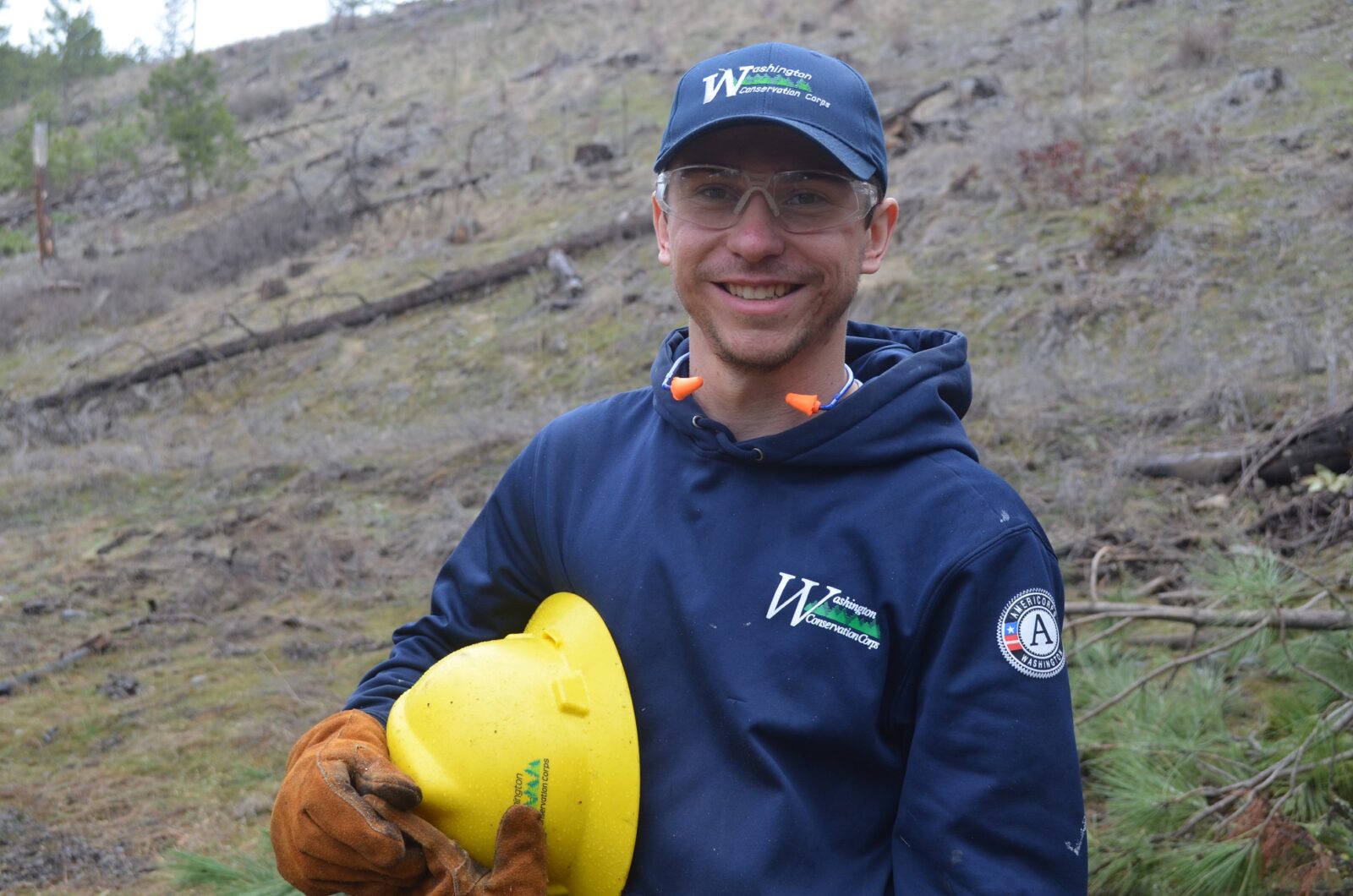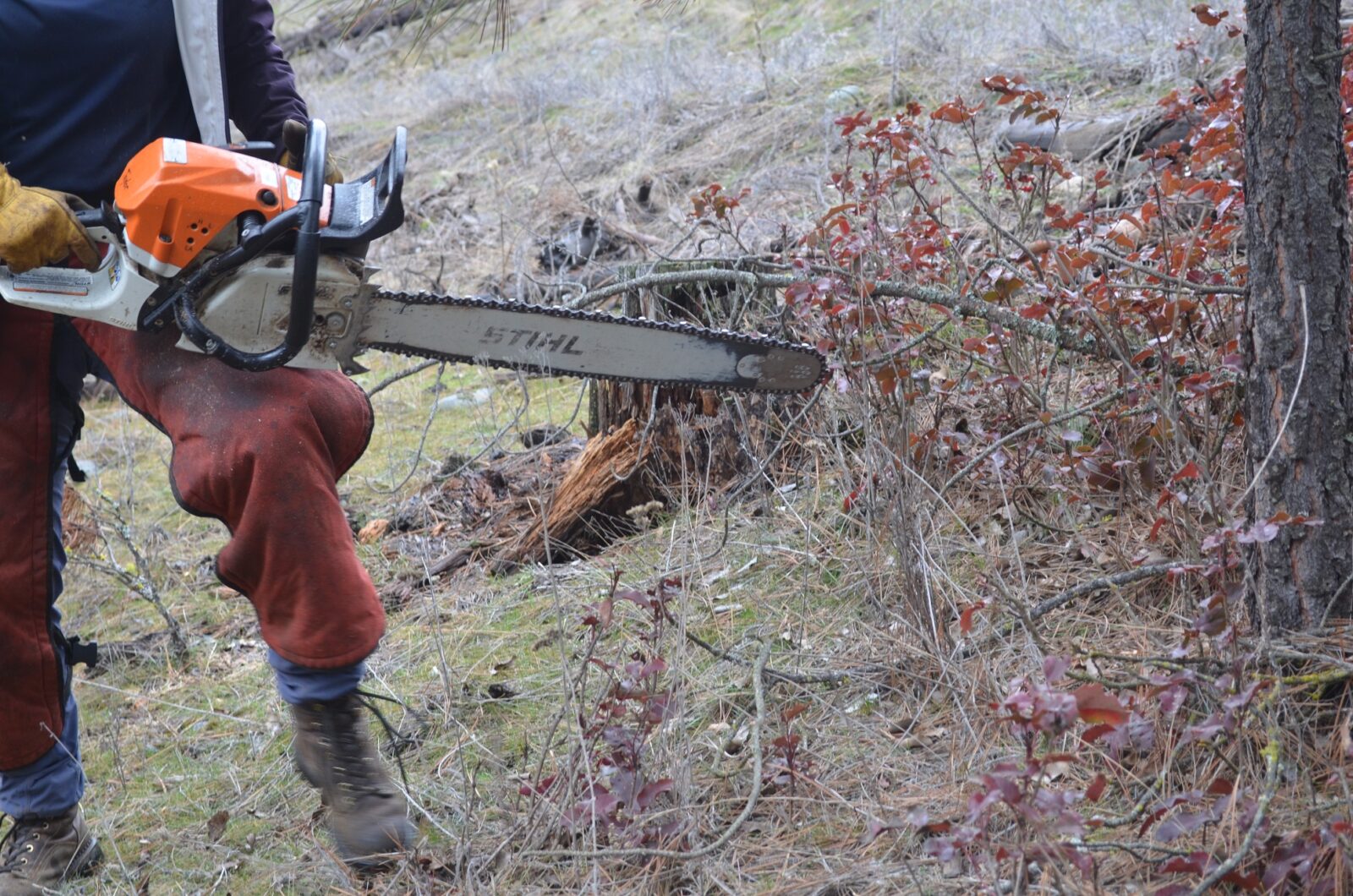WCC at Waikiki
March 9, 2022
March 9, 2022

Now seems like a good time for a story that points to hope for the future. And that’s exactly what I found at Waikiki Springs Nature Preserve on a rainy morning in early March. Six young people covered in mud and sawdust grinned through the raindrops as they showed me the area in which they’d been working to remove unhealthy ponderosa pine seedlings and other non-native undergrowth to create a healthy forest environment in the Conservancy’s preserve along the Little Spokane River.
These members, part of a Washington Conservation Corps (WCC) restoration crew*, hailed from as far away as New Jersey and Illinois, and signed on to this program through AmeriCorps. WCC is a partnership between AmeriCorps and Washington Department of Ecology. Their mission is “to conserve and enhance the natural resources of Washington while providing meaningful service opportunities to young adults and military veterans.” Since its inception in 1983, the program has grown to 52 crews and 15 individual placements throughout the state of Washington. Participants in WCC serve between three and 11 months, traveling all over the state, learning about forest health, chainsaw protocol, pesticide management, teamwork, and deep engagement with communities and nature systems.

AmeriCorps members who complete an 11-month term with WCC receive an education award of over $6,000 to put toward a degree or other education, like first aid training. All members of the WCC are either veterans or young adults between the ages of 18-25. In addition to restoration and recreation projects, WCC members often aid with emergency response to natural disasters like hurricanes, floods, and wildfires.
In the month of March, this WCC crew will spend 80 hours at Waikiki Springs, improving the health of the forest and shoreline. This 95-acre preserve, under Conservancy ownership and management, is a tremendous asset to the local community and provides us with a chance to improve upon already prime habitat for native fish populations. But with a paid stewardship staff of one, accomplishing all the restoration and forest management necessary is a stiff task.
Rose Richardson, the Conservancy’s Stewardship Director, is a WCC alum and credits those two years of WCC experience with her current career path in conservation. “I knew I wanted to work outside but didn’t know how to get started on that kind of career path,” she says. “WCC enabled me to network with conservation professionals, learn valuable skills, and build some life-long friendships.” When Rose created the forest health plan for Waikiki Springs, she expected it to take three years, utilizing volunteer crews, but because of the skill, dedication, and focus of this WCC crew, she estimates the project will be done by the end of the year!
*Restoration crews work to improve habitat for fish and wildlife. WCC also runs trail and spike crews throughout the state that focus on trail building on public lands and other short-term restoration or recreation projects for WCC partner agencies and organizations.
